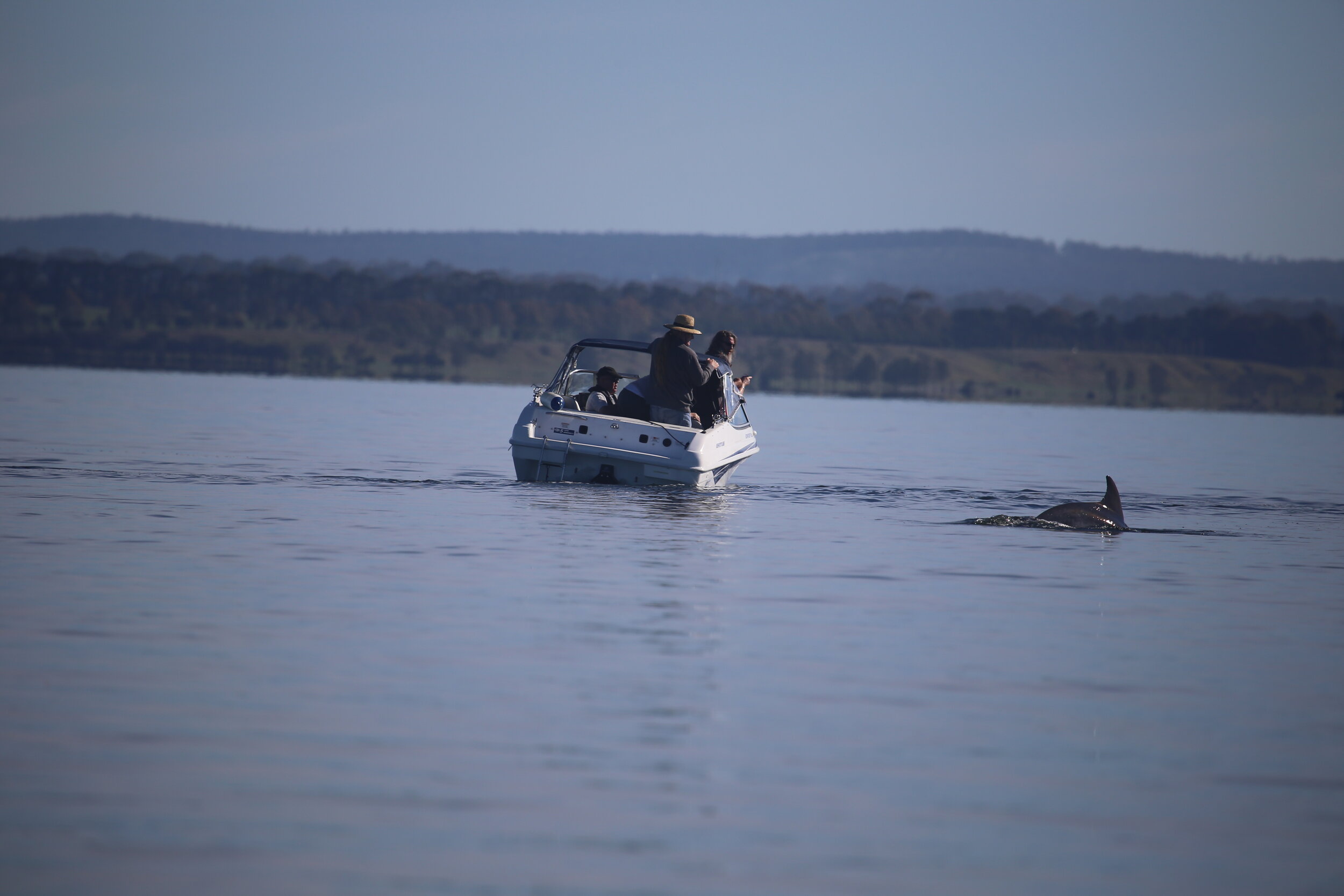
GUIDELINES FOR APPROACHING MARINE MAMMALS IN AUSTRALIAN WATERS
There are a number of guidelines in place for specified approach distances for marine mammals. The Australian National Guidelines for Whale and Dolphin Watching clearly defines a set of standards for all human activity around cetaceans (dolphins and whales) PDF can also be obtained. These standards apply to commonwealth waters, three nautical miles from the coastline. Each State and Territory is responsible for guidelines and regulations within three nautical miles of the coastline.
The Australian Government clearly state the basic rules when near whales and dolphins.
Remain quiet and do not try to feed or touch them.
Be alert and watch for whales and dolphins at all times.
When in a vessel, do not approach closer than 100m to any whale or 50m to any dolphin.
The caution zone for vessels is the area within 300m of a whale and 150m of a dolphin. No more than three vessels are allowed within the caution zone at any one time and vessels should operate at no wake speeds within this zone.
Approach whales and dolphins from parallel to and slightly to the rear – not from directly behind or head-on.
When leaving whales or dolphins, move off at a slow (no wake) speed to the outer limit of the caution zone (300m) from the closest animal before gradually increasing speed.
Keep a lookout and avoid disturbance to mother whales or dolphins and their calves. Mother and calves will be close together and the calves are sometimes difficult to see.
If there is a sudden change in whale or dolphin behaviour, move away immediately at a slow steady pace.
Whales and dolphins sometimes form social groupings and may approach your vessel – if this happens place the engine in neutral and let the animal(s) come to you; slow down and continue on your course; or steer a straight course away from them.
Do not get into the water if you see a whale or dolphin. If you’re already in the water do not disturb, chase or block the path of a whale or dolphin and if possible, return to your vessel or the shore.
Victorian Regulations
Do not approach dolphins within 100m if you are in a vessel (powered or unpowered, including recreational vessels, kayaks, stand-up paddle boards, and yachts) and 300m if you are on a jetski.
Do not approach whales within 200m if you are in a vessel (powered or unpowered) and 300m if you are on a jetski.
Seals are a little more complicated, as they can come ashore or ‘haul out’ on land. Do not approach seals within 30m on land, whether you are also on land or in the water. Dogs are not permitted within 50m of a seal on land. Do not approach within 5m of a seal on a boat ramp, pier, jetty or other infrastructure connected to land and designed for access to the water. Do not approach on a vessel within 30m of a seal haul out site. If you are swimming, do not approach within 5m of a haul out site.
There are caution zones that apply to marine mammals. Caution zones are within 300m of a whale, within 150m of a dolphin, and within 50m of a seal, subject to a range of other operating conditions.
When in the caution zone, all vessels (motorised or not) must:
avoid sudden changes in direction
maintain a constant speed not exceeding 5 knots (8 kilometres per hour)
leave the caution zone if a marine mammal shows any sign of disturbance
not approach whales, dolphins or seals from directly in front of the animal
not approach whales, dolphins or seals from directly behind the animal
not be in the known path of a whale, dolphin or seal
not form a barrier between a marine mammal and its group
not come between a mother and her young.
These regulations are enforced by Authorised Officers from the Department of Energy, Environment and Climate Action (DEECA). More information can be found here.
For general enquiries and wildlife emergencies call DEECA on 136 186.
Call the Whale and Dolphin Emergency Hotline on 1300 136 017 immediately should you become aware of a stranded or injured whale or dolphin.
State and Territory approach guidelines can also be found for Queensland, New South Wales, Tasmania, South Australia, Western Australia, and the Northern Territory.
Why are these regulations in place?
These regulations are in place to reduce disturbance to ensure both the dolphins’ safety and yours. Inappropriate vessel approaches can disrupt core biological behaviours, such as feeding and resting, while also increasing the risk of collisions with the dolphins, potentially causing injury and death. Mothers and calves are most at risk, as calves spend more time at the surface and can be more inquisitive, thus are more prone to vessel strikes.
Marine mammals are wild animals and need the choice to interact with us on their terms!



